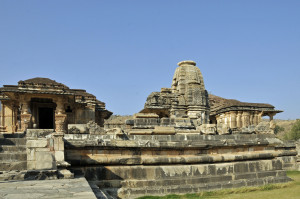Near the city of Udaipur in northwest India is a Hindu temple complex called Sahasra Baahu, built more than 1000 years ago. The intricate stone carvings both inside and out reflect countless hours of tedious effort. But the complex and the extraordinary human effort it represents now lie abandoned, not because no worshippers are nearby but because the temple has literally lost its soul.
For most Hindus, the ultimate reality of the universe is “Brahman,” a transcendent and unknowable power behind and beyond all existence. The many images of Hindu gods found throughout India are embraceable manifestations of the divine, worshipped by people incapable of wrapping their minds around the incomprehensible nature of Brahman. Somewhat like Christians with a guardian angel, many Hindus consider themselves monotheists despite praying to specific manifestations of the ultimate reality for help and guidance.
To worship their chosen manifestations of Brahman, Hindus have long built temples having the essential characteristics of temples everywhere. At the center is the Holy of Holies, where the statutory image resides. Above the Holy of Holies, a pyramid-shaped tower points toward the heavens. On the walls are carvings having religious significance.
Surprising to many Christians, for whom God and sexual pleasure don’t usually mix, the walls of Hindu temples often contain explicit sex scenes, not always procreative. Hindus find the divine in all human activity and nothing is shameful about the desire for pleasure. The wildly colorful exteriors of many Hindu temples demonstrate this same idea.
When Sahasra Baahu was completed in the tenth or eleventh century, a stone image of the god Vishnu was placed in the Holy of Holies. A priest then called the power of Brahman into the statue. Once so consecrated, the temple became alive and worshippers could experience the divine within it.
Today, no image resides in Sahasra Baahu’s Holy of Holies. Probably hundreds of years ago the statue was damaged, likely by persons opposing Hindu beliefs. As a result, the temple died, never to live again. With the spirit of the eternal Brahman missing, the magnificent stone carvings have no more spiritual significance than a pile of rocks.

Comments are closed.